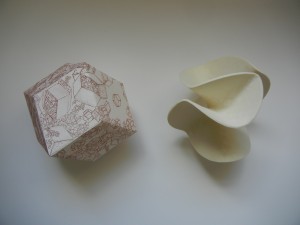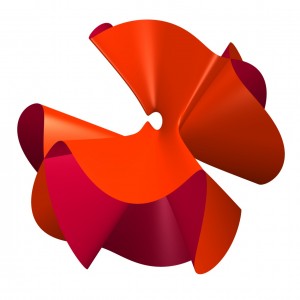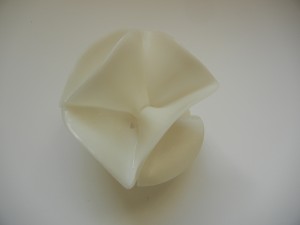A Conversation with James Lloyd
Conversation between Gemma Anderson (www.gemma-anderson.co.uk) and Science Writer James Lloyd of www.thesoftanonymous.com.
JL: Gemma, could you tell me a little bit about your background and some of the previous projects you’ve worked on?
GA: My background is Fine Art really, I studied at the Royal College of Art and University College Falmouth (where I am now doing a PhD). Since graduating from the RCA in 2007, I have worked as an artist, sometimes alone and sometimes in collaborations. I worked on a Wellcome Trust Arts Award project “Portraits: Patients and Psychiatrists” (http://gemmaanderson.wordpress.com/)in collaboration with a Forensic Psychiatrist and Bethlem Royal Hospital, I was artist in residence with the Jerwood Foundation (http://gemmaandersonjerwood.wordpress.com/) last year and have worked on and off with University College London and The Natural History Museum since moving to London in 2005.
JL: How did your collaboration with the Fano team at Imperial College come about?
GA: I was in Imperial College for a meeting with someone in Material Sciences (concerning aluminium) and while I was waiting, I started reading the Imperial College newsletter. One of the articles was titled “Periodic Table of Shapes” with an image of a fano (now one of my favourites), I was struck by both the image and the description. As an artist, I was very excited by the Fano form, I hadn’t seen anything like it before and I wanted to know more about the research. I emailed Dr Tom Coates the same day, we met the following week (by then I had drawn many of the Fanos I found on the blog).
JL: What artwork are you working on for this project?
GA: Since the initial meeting and drawings, we have been developing a few different strands of work based on the Fano Varieties. One is drawings and etchings, working with Fanos and their related symmetry groups. We have also been developing a method and (a computer programme!) to make some fan varieties into 3-D models. This involves RP and very exciting casting processes. Another form we are developing is that if the Slice-Form, using more computer programmes and a lazer cutter. There are lots of details to each area and it is all work in progress, and we are developing new ways of imagining the Fanos all the time.
JL: Intricate shapes often feature in your drawings – is geometry something you’re interested in?
GA: Yes, I am very interested in geometry, and love drawing geometric forms. I am especially interested in where geometry becomes visible in natural forms, so crystallography and mathematical biology are subjects I work with.
JL: Your previous work focuses on organic subjects – people, plants, animals, and landscapes. Is this project a departure for you in that it deals with more rigid, static objects?
GA: I see this work as an interesting departure, but more and more it is linking to my previous work and current interests in my PhD research. The Fanos are very interesting to work with, as in lots of ways they are quite alien, but when compared to things like radiolarians, they suddenly feel more earthly. I don’t’ see the Fanos as rigid or static and I suppose part of the aim of this collaboration is to move them away from those associations.
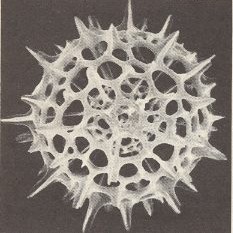
JL: Do you have any plans to exhibit this work?
GA: Yes, we are thinking of a few places as we would like to site the work within the science context and also the contemporary art world. So we are applying to the Royal Society Summer Exhibition to show the work there, and planning on exhibiting at Imperial College, but also including the works in a solo show I will have soon at a Gallery in London.
Rapid Prototyping a Fano Form
Rapid Prototyping technology is the name given to a host of related technologies that are used to fabricate physical objects directly from CAD data sources. These methods are generally similar to eachother in that they add and bond materials in layerwise-fashion to form objects. I was aware that the Royal College of Art had an RP machine and began to wonder if we engineer a Fano file so that it could be read by the machine, therefore providing the opportunity to make a Fano Form into a physical object.
Tom Coates and I discussed how this could work, the Fano files are developed in Mathematica Programme so there was a bit of work to do before they could be read by RP technology. Tom and I selected a Fano Form to start with…..
Then Tom, and a couple of helpers from Imeprial worked on the file until it was ready to hand over to the Royal College, where, another computer whizz laboured the now STL file to a stage where we could go to RP… We choose to make one in Resin and one in plaster to see the different qualities… Here is one of the RP resin models….
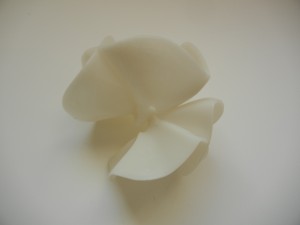 So it worked. Now there is lots of work to do to give them colour, work with suitable materials, relate each form to symmetry groups, the natural world, each other……..
So it worked. Now there is lots of work to do to give them colour, work with suitable materials, relate each form to symmetry groups, the natural world, each other……..

